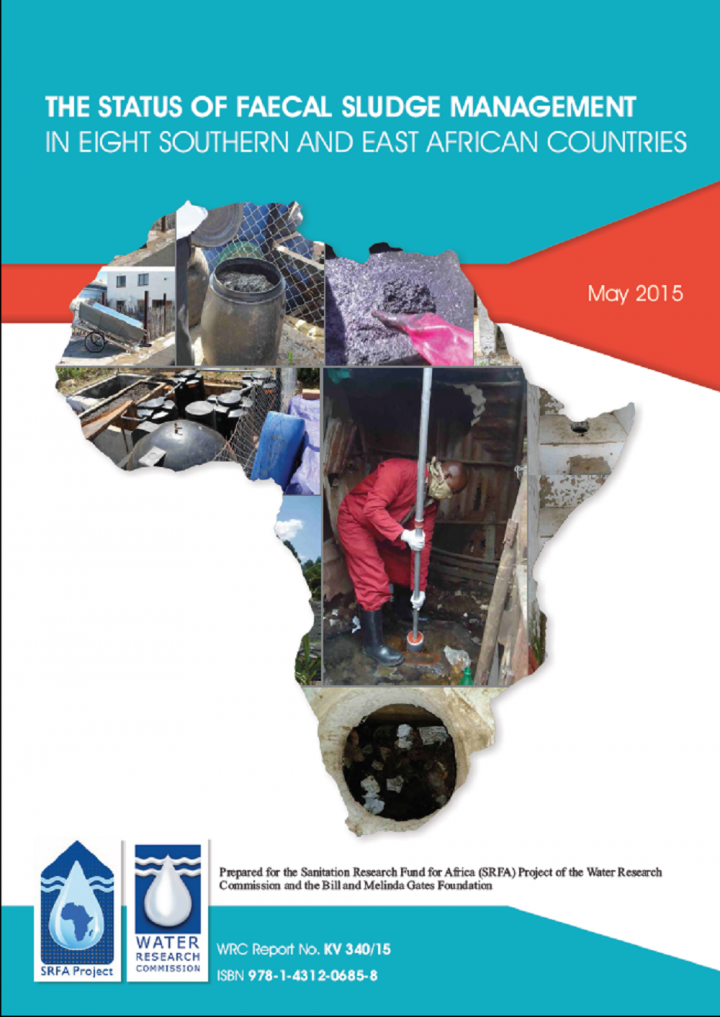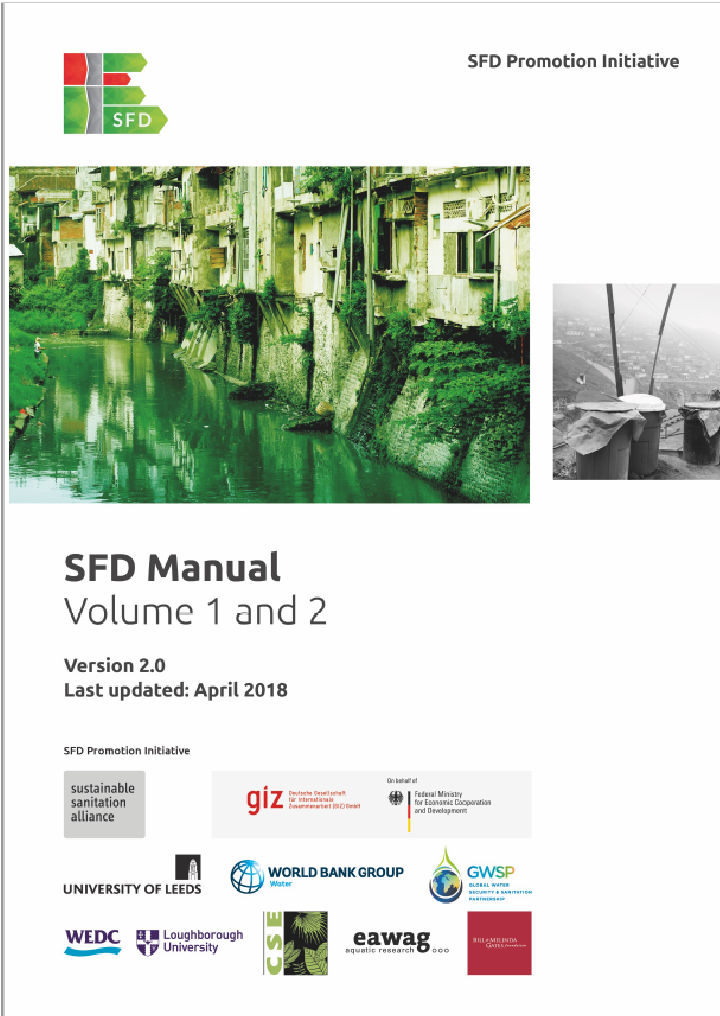WBCSD (2013) Water, sanitation and hygiene implementation at the workplace Pledge and guiding principles
This publication includes a set of guiding principles that will support companies in their efforts to implement water, sanitation and hygiene (WASH) at the workplace. Companies are invited to commit to these principles by signing the WBCSD Pledge for Access to Safe Water, Sanitation and Hygiene at the Workplace. This Pledge aims to secure appropriate access to safe WASH for all employees in all premises […]
Velleman, Y. et al. (2014) From joint thinking to joint action - A call to action on improving water, sanitation, and hygiene for maternal and newborn health
There is sufficient evidence that water, sanitation, and hygiene (WASH) may impact maternal and newborn health (MNH) to warrant greater attention from all stakeholders involved in improving MNH and achieving universal WASH access. Enabling stronger integration between the WASH and health sectors has the potential to accelerate progress on MNH; this should be accompanied by improving monitoring of WASH in health care facilities providing MNH Service […]
WHO, UNICEF (2015) Water, sanitation and hygiene in health care facilities Status in low and middle income countries and way forward
This report presents for the first time a multi-country review of water, sanitation and hygiene (WASH) services in health care facilities in 54 low- and middle-income countries. WASH services provide for water availability and quality, presence of sanitation facilities and availability of soap and water for handwashing. The main focus of the results is on water availability as there were very limited data on water […]
Cronk, R., Slaymaker, T., Bartram, J. (2015) Monitoring drinking water, sanitation, and hygiene in non-household settings: priorities for policy and practice International journal of hygiene and environmental health
Inadequate drinking water, sanitation, and hygiene (WaSH) in non-household settings, such as schools, health care facilities, and workplaces impacts the health, education, welfare, and productivity of populations, particularly in low and middle-income countries. There is limited knowledge on the status of WaSH in such settings. To address this gap, we reviewed international standards, international and national actors, and monitoring initiatives; developed the first typology of […]
Roeder, L. (2015) SFD Report - Nashik, India SFD Promotion Initiative
The city of Nashik is located in the northwest of the state of Maharashtra in the Western Ghats at the source of the Godavari River. As per Census 2011 Nashik has a total population of just under 1.5 Million. In Nashik it was estimated that 85% of excreta is managed safely while 15% of the excreta ends up directly in the environment without adequate treatment. This […]
Bundy, D. (2011) Rethinking School Health Key Component of Education for All
The provision of quality schools, textbooks, and teachers can result in effective education only if a child is in school and ready and able to learn. The child is at the center of efforts to achieve Education for All (EFA) by 2015 and to address the Millennium Development Goals (MDGs) of universal basic education and gender equality in educational access. A child who is hungry […]
Bahl, M. (2015) Ensuring a Systematic and Demand Oriented Approach for Developing a Comprehensive State Sanitation Strategies (SSS) SNUSP II - Factsheet
The National Urban Sanitation Policy (NUSP), launched in 2008 by Ministry of Urban Development (MoUD), Government of India; is based on the 74th Constitutional Amendment Act (1992), aims to strengthen Urban Local Bodies (ULBs). The overall goal of the policy is to transform urban India into sanitised, healthy and liveable cities and towns. Particular focus is given to improvement of hygienic conditions for the urban […]
Ayala, M., Paniagua, H. (2015) Marco de evaluación de capacidades para la sostenibilidad de servicios de saneamiento en EPSA (MECSSS) (in Spanish) Capacity evaluation framework for the sustainability of sanitation services in EPSA (MECSSS)
Documento que desarolla una metodología de análisis de las capacidades para la sostenibilidad de servicios de agua y saneamiento en entidades prestadoras de servicios de agua y saneamiento en el país, mediante, lineamientos que ayuden a orientar las necesidades organizacionales para enfrentar el reto de incorporación de este tipo en su cartera. I. ANTECEDENTES II. OBJETIVO III. ENFOQUE DE LA PROPUESTA IV. ENFOQUE DEL MARCO DE EVALUACIÓN […]
GTO (2015) Building and operating sanitary facilities in refugee accommodation in Germany WASH ePaper, Issue No. 4 (in English, French, German, Spanish)
The WASH e-paper is an online magazine published at regular intervals in German and English. Each issue takes a closer look at a current key issue in the water, sanitation and hygiene (WASH) sector and related areas. It also provides updates on forthcoming national and international events, highlights current publications and projects, and reports on news from the sector. The WASH e-paper is published by […]
UNSGAB (2015) The UNSGAB Journey
In early 2004, the then United Nations Secretary-General Ko Annan called on former Prime Minister Ryutaro Hashimoto of Japan to Devise and execute this idea: bring together eminent people to advise on how to solve the planet’s foremost water and sanitation troubles, suggest a handful of attainable recommendations and a concise plan of action, and then provide the high-level leadership needed to galvanize the international […]
WHO, UNICEF & USAID (2015) Improving Nutrition Outcomes with Better Water, Sanitation and Hygiene Practical Solutions for Policies and Programmes
This publication, jointly prepared by WHO, the United Nations Children’s Fund (UNICEF) and the United States Agency for International Development (USAID), summarizes the current evidence on the benefits of WASH for improving nutrition outcomes and describes how WASH interventions can be integrated into nutrition programmes. It provides practical suggestions, targeted at nutrition programme managers and implementers, on both “what” WASH interventions should be included in […]
WRC (2015) The Status of Faecal Sudge Management in Eight Southern and East African Countries
In 2012, the Water Research Commission, together with the Bill and Melinda Gates foundation, took a strategic decision to develop capacity in Africa to deal with faecal sludge management. This initiative, known as the Sanitation Research Fund for Africa (SRFA) Project, provides an exclusive research and development grant of up to US$200 000 to African institutions and organisations. 12 African institutions and organisations from […]
Mahmud, I., and Nkosinathi M. (2015) Water, Sanitation and Nutrition in Bangladesh: Can building toilets affect children´s growth? A World Bank Study
This report provides a systematic review of the evidence to date, both published and grey literature, on the relationship between water and sanitation and nutrition. We also examine the potential impact of improved water, sanitation and hygiene (WASH) on undernutrition. This is the first report that undertakes a thorough review and discussion of WASH and nutrition in Bangladesh. The report is meant to serve two […]
O’Connell, K. (2014) What influences open defecation and latrine ownership in rural households? Findings from a global review
WSP’s Scaling Up Rural Sanitation is working with governments and the local private sector to develop the knowledge needed to scale up rural sanitation for the poor. The programmatic approach combines Community-Led Total Sanitation (CLTS), behaviour change communication, and sanitation marketing to generate sanitation demand and build up the supply of sanitation products and services at scale. In addition, WSP works with local and national […]
Furlong, C., Mensah, A. (2015) SFD Report - Kumasi, Ghana SFD Promotion Initiative
Kumasi is the second largest city in Ghana and lies in the Ashanti Region in the south of the country (Adarkwa, 2011). The city covers approximately 254 sq. km. It has an approximately population of 2.7 million with an annual growth rate of 5.5% (City Population, 2015, World Bank, 2008). A high percentage of the population of Kumasi is reliant on public toilets that are […]
GTO (2015) WASH – Post Implementation Monitoring WASH ePaper, Issue No. 3 (in English, French and Spanish)
The WASH e-paper is an online magazine published at regular intervals in German and English. Each edition takes a closer look at a current key issue in the water, sanitation and hygiene (WASH) sector and related areas. It also provides updates on forthcoming national and international events, highlights current publications and projects, and reports on news from the sector. The WASH e-paper is published by […]
GTO (2015) The German WASH Stakeholder landscape WASH ePaper, Issue No. 2 (in English, French, German and Spanish)
The WASH e-paper is an online magazine published at regular intervals in German and English. Each edition takes a closer look at a current key issue in the water, sanitation and hygiene (WASH) sector and related areas. It also provides updates on forthcoming national and international events, highlights current publications and projects, and reports on news from the sector. The WASH e-paper is published by […]
SFD PI (2017) SFD Manual (in Arabic, English and French) SFD Promotion Initiative
An excreta flow diagram (also often described as shit flow diagram, SFD) presents a clear picture of the outcome arising from wastewater and faecal sludge management practices and services in a city or town. This is expressed in terms of the percentage of the population. An accompanying report describes the service delivery context of the city or town.
Various authors (2015) Integrated sanitation investment planning tool Various documents on results from research grant
Various authors (2015) Verification of BRAC grant outcomes Various documents on results from research grant




















